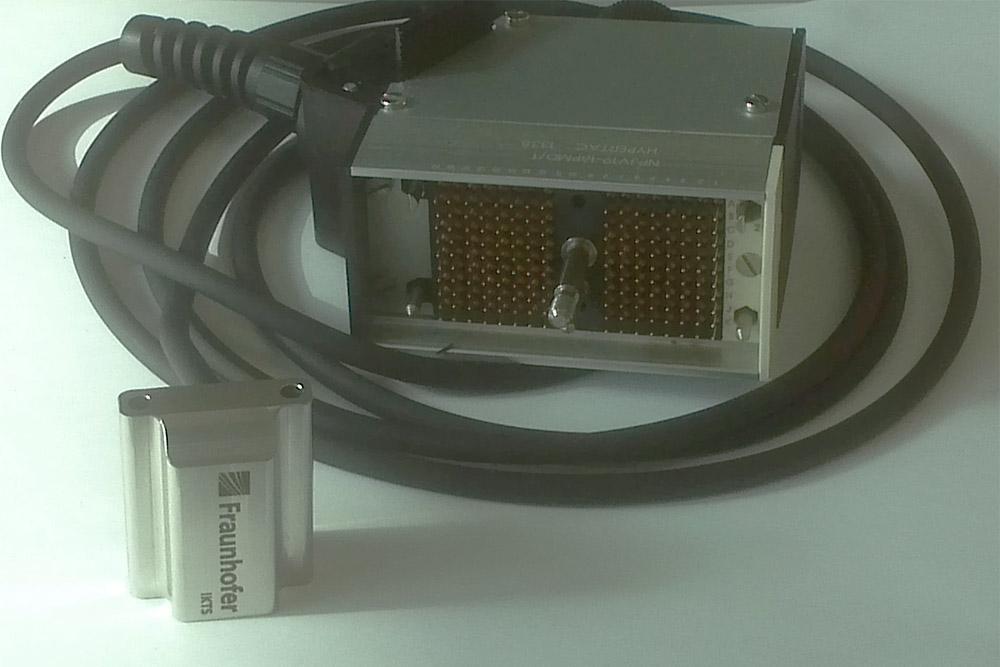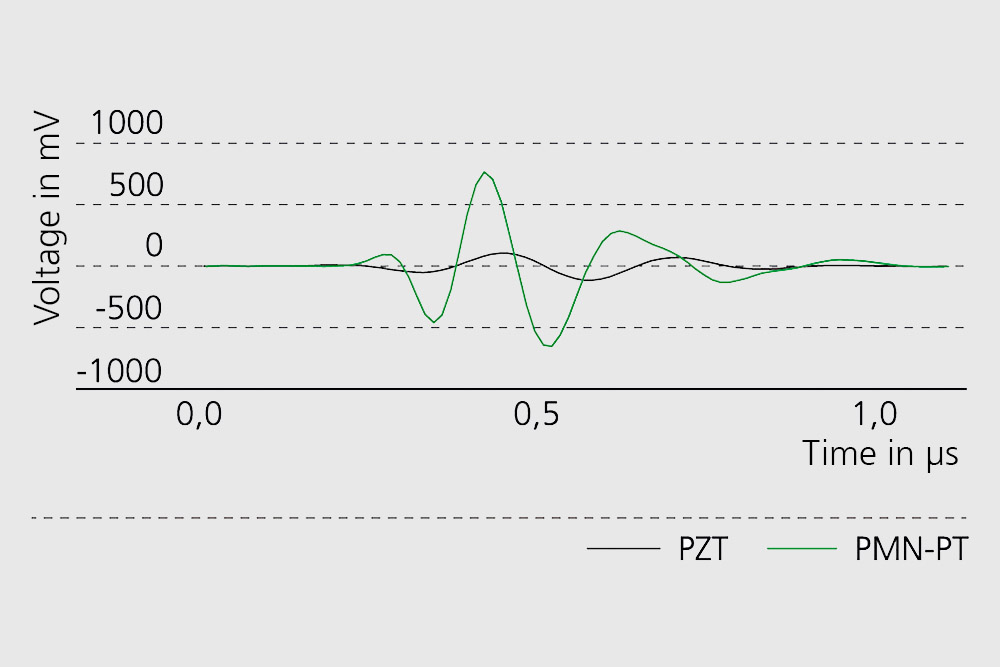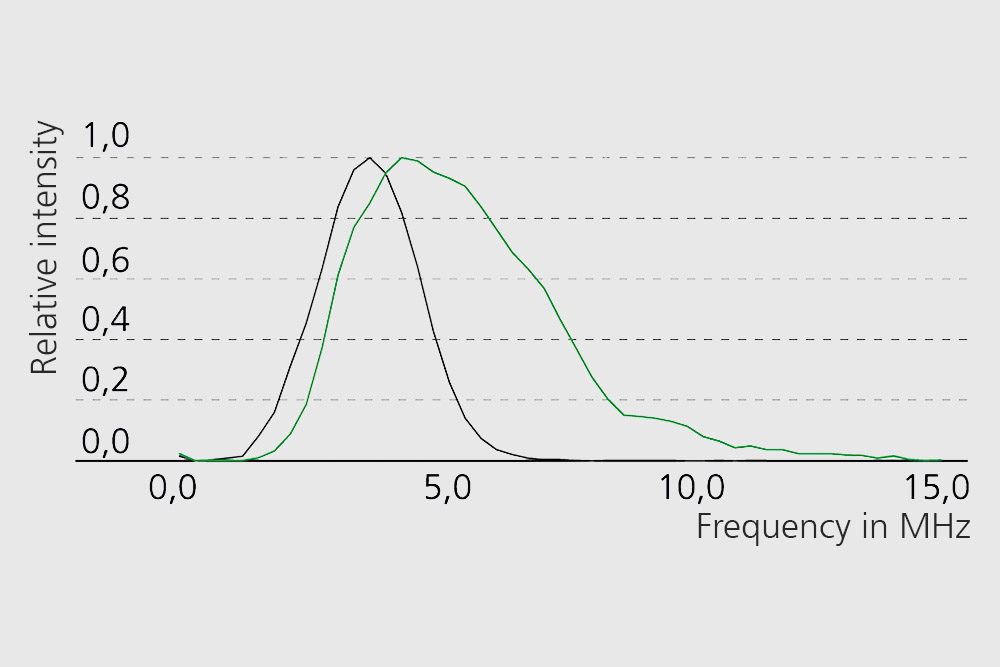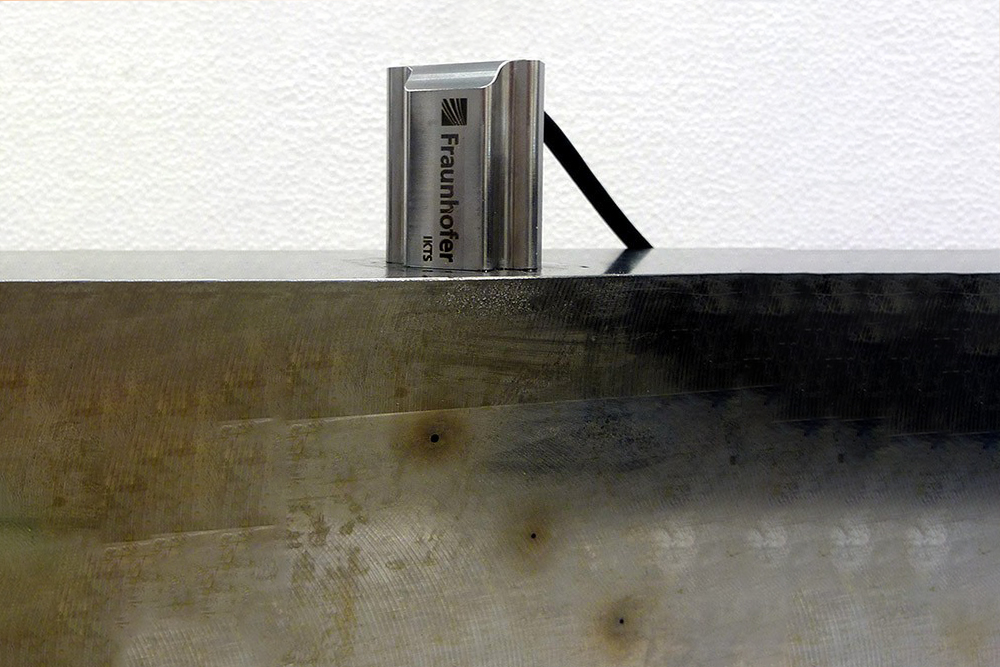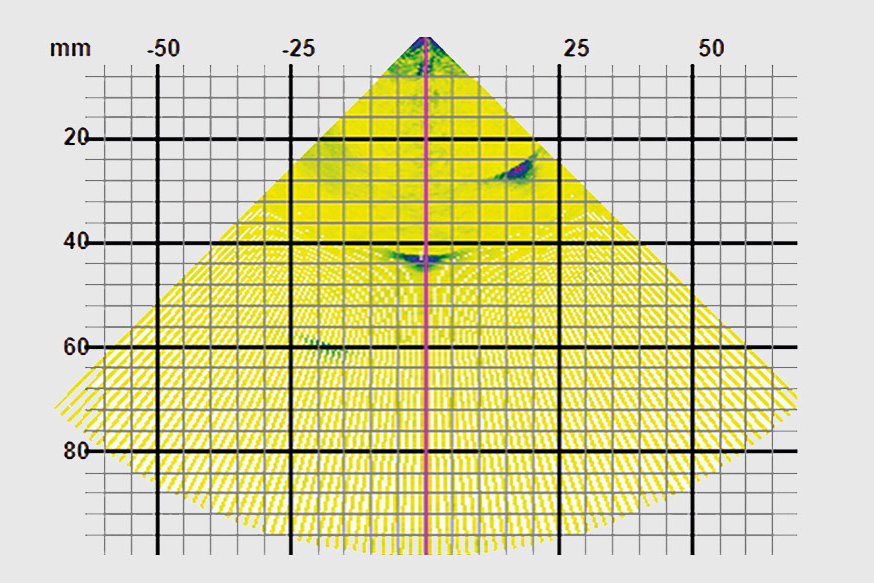Development of highly sensitive probes on PMN-PT basis
As a monocrystal material, lead magnesium niobate/lead titanate (PMN-PT) is known for its outstanding piezoelectric properties. It constitutes a very promising basis for the development of highly sensitive ultrasonic probes. Early PMN-PT transducers have shown that significantly higher amplitudes and bandwidths are possible (see figures).
